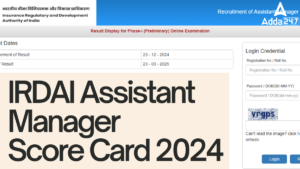Dear Readers,
This year we’ve observed major changes in Banking examination’s pattern and level. Quantitative Aptitude is one of the scoring subject if one has practiced it properly. As not many days are left for IBPS PO and BOB Exams, there comes a need to step up the level of preparation as well.
And to meet the need of the hour, here we give you Twisted Ones of Maths.
These set of questions will help you prepare for the unexpected.
Q1. Pipe A, B and C are kept open and fill a tank in t minutes. Pipe A is kept open throughout, pipe B is kept open for the first 10 minutes and then closed. Two minutes after pipe B is closed, pipe C is opened and is kept open till the tank is full. Each pipe fills an equal share of the tank. Furthermore, it is known that if pipe A and B are kept open continuously, the tank would be filled completely in t minutes. How long will C alone take to fill the tank?
(a) 18
(b) 36
(c) 27
(d) 24
(e) 20
Q2. The average age of a couple was 24 years. After their 1st and 2nd children (twins) were born, the average age of the family became 13.5 years. The average age of the family just after 3rd child was born was 13.2 years. The average age of the family after 4th child was born was 16 years. The current average age of the family is 19 years. What is the current age of the twin children?
(a) 14 years
(b) 15 years
(c) 11 years
(d) 12 years
(e) 13 years
Q3. A man buys Vinegar at Rs 10/litre and dilutes it with water. He sells the mixtures at the cost price and thus gains 11.11%. Find the quantity of water mixed by him in every litre of Vinegar.
(a) 0.1 L
(b) 0.909 L
(c) 0.125 L
(d) 0.111 L
(e) None of the above
Q4. There are 500 rooms in a multi-floored hotel. However, due to a change in rule, the hotel has to decrease the number of floors by 5. However, the management is able to put 5 more rooms in each floor. Over all, the number of rooms in the hotel decreases by 10%. Find the number of floors and the number of rooms/floor the hotel originally had?
(a) 10 floors 50 rooms
(b) 20 floors 20 rooms
(c) 20 floors 25 rooms
(d) 50 floors 10 rooms
(e) Cannot be determined
Q5. A earns 25% more than B. C earns 25% more than A. A earns 20% more than D. E earns 20% more than A. A, B, C, D, and E earn integer amounts less than Rs. 100. What is the total amount earned by all five of them put together?
(a) Rs. 300
(b) Rs. 245
(c) Rs. 305
(d) Rs. 480
(e) Data inadequate
Q6. On a certain sum of money, compound interest earned at the end of three years is equals to Rs. 1456. Compound interest at the end of two years is Rs. 880. Compute the principal invested.
(a) Rs. 2,400
(b) Rs. 2,800
(c) Rs. 2,000
(d) Rs. 1,600
(e) None of the above
Q7. Two ship travelling at 30 km/hr and 90 km/hr head directly towards each other, they are 120 km apart at the starting time. How far apart are they (in Km.) at one minute before they collide.
(a) 1 km
(b) 2 km
(c) 3 km
(d) 4 km
(e) None of the above
Q8. A, B and C start from the same place and travels in same direction at speeds of 20, 30 and 40 km/hr respectively. B starts 3hour after A. If B and C overtake A at the same instant. How many hours after A did C start.
(a) 4
(b) 3.25
(c) 4.5
(d) 5.5
(e) None of the above
Q9. Sameer went from Delhi to Kanpur via Agra by car. The distance from Delhi to Agra is ½ times the distance from Agra to Kanpur. The average speed from Delhi to Agra was one-third time as much as that from Agra to Kanpur. The average speed for the entire journey was 60 km/hr, What was the average speed from Agra to Kanpur.
(a) 1.15 km/hr
(b) 90 km/hr
(c) 120 km/hr
(d) 100 km/hr
(e) None of the above
Q10. Out of the 75 students enrolled in the Economics class, 12% did not qualify to take the final examination on account of lack of attendance. Of those who qualified to take the test, 9.09% absented themselves from the exam. Two thirds of those who took the exam passed the examination. 75% of those who passed secured a first class in the paper. How many students who passed the exam scored less than first class?
(a) 15
(b) 10
(c) 12
(d) 16
(e) None of the above
Direction (11-15): What should come in place of the question mark (?) in the following number series?
Q11. 550, 550, 549, 544, 515, ?
(a) 495
(b) 505
(c) 315
(d) 306
(e) 510
Q12. 450, 900, 600, 800, 640, ?
(a) 678
(b) 568
(c) 853
(d) 650
(e) 768
Q13. 1, 10, 130, 1570, ?, 36130
(a) 21012
(b) 10021
(c) 10210
(d) 12010
(e) 11020
Q14. 1134, 810, 756, ?, 540, 480
(a) 540
(b) 640
(c) 440
(d) 740
(e) 840
Q15. 50, 562, 762, 2524, 6189, ?
(a) 18542
(b) 20295
(c) 25682
(d) 5428
(e) 12504



 The Hindu Review October 2022: Download ...
The Hindu Review October 2022: Download ...
 IRDAI Assistant Manager Score Card 2024 ...
IRDAI Assistant Manager Score Card 2024 ...
 IRDAI Assistant Manager Prelims Cut Off ...
IRDAI Assistant Manager Prelims Cut Off ...




